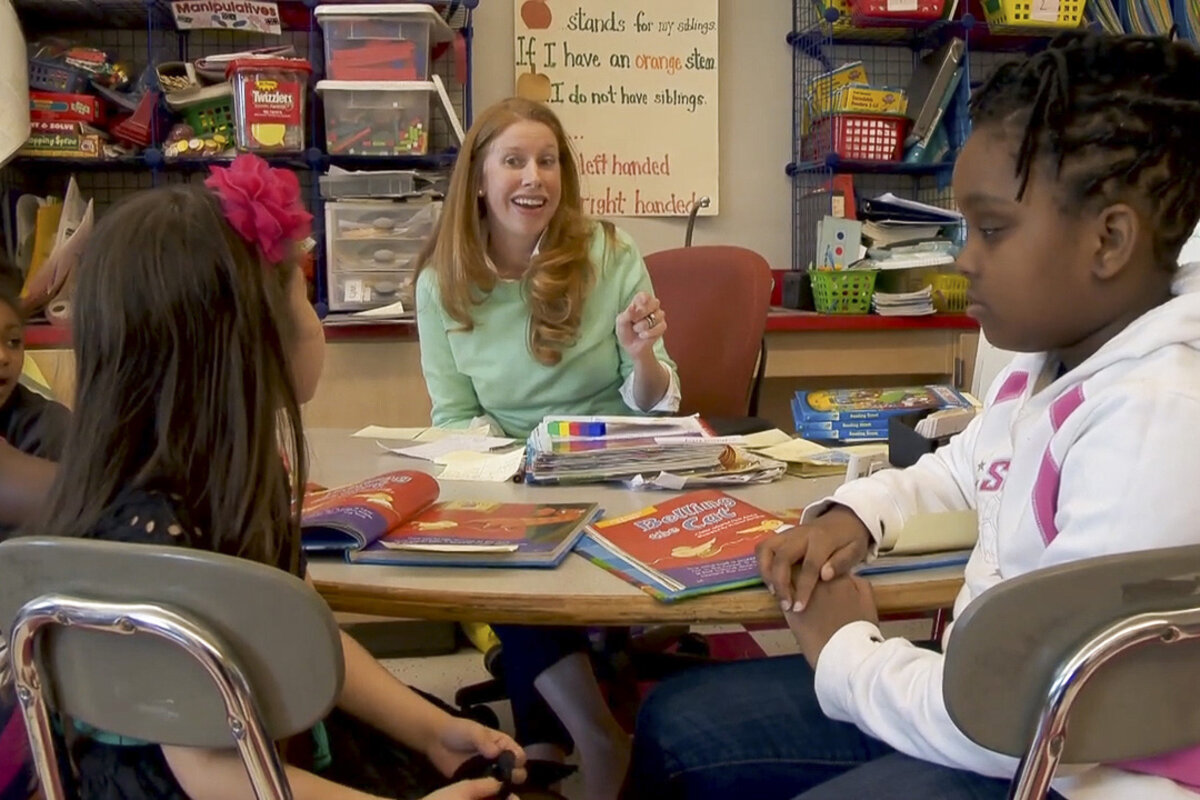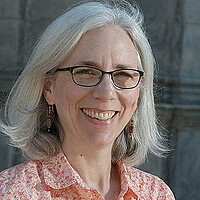How one Massachusetts town turned around early reading program
Loading...
| Malden, Mass.
When Carlos entered Kristen Reidy’s first-grade class at the Salemwood School in Malden, Mass., nearly five years ago, his reading scores put him in the “at risk” category. He missed his dad, who was still in the family’s home country in Central America, and he “could get into some behavior problems if you didn’t have the right mitts to catch him and let him know you believe in him,” Ms. Reidy says.
By the end of first grade, Carlos (not his real name) had become one of the top readers, and Reidy, now his fifth-grade teacher, has watched him become “empowered” by reading.
When he chose Pam Muñoz Ryan's award-winning “Esperanza Rising” – about a girl from Mexico who loses her wealthy father and has to work in a field in California – “he sat there one day and just was crying, going, ‘This is amazing.’... He has fallen so in love with literature,” Reidy says. He went home and made his mother read the book, too.
Aiming to catch up every child who is behind in reading, and watching some soar beyond the grade-level expectation, has become part of the culture at Salemwood. Through partnerships with the nonprofit Bay State Reading Institute (BSRI), Salemwood and about 40 other schools in Massachusetts have begun to transform the way they teach reading, and many have made strides toward closing stubborn achievement gaps, particularly for low-income students.
A in 2010 noted that 83 percent of low-income students were failing to score “proficient” in reading by fourth grade. Because that is a predictor of lower educational success overall, it was “a wake-up call that has energized people to say, we have to close that gap,” says Elizabeth Burke Bryant, a senior consultant for the Campaign for Grade-Level Reading, a national collaboration between nonprofits, government agencies, and businesses to promote childhood literacy. “The good news is, the issue of the reading achievement gap is on the radar screen as never before.”
About 32 states have made early reading achievement a priority, and 170 communities have joined the campaign, says Ms. Bryant, executive director of the policy group Rhode Island KIDS COUNT. These coalitions are working to support schools by boosting early childhood education, encouraging families to reduce school absenteeism, and setting up programs to reduce the “summer slide.”
Decades of federal education accountability measures have helped uncover achievement gaps for students of color, low-income students, and English-language learners, but figuring out how to close them has been more difficult. “Even in states that have high achievement levels, they still struggle with these achievement gaps,” says Micah Ann Wixom, a policy analyst for the Education Commission of the States in Denver. She recently – Massachusetts, Connecticut, Wisconsin, and Washington – that have taken significant actions to reduce such gaps.
Massachusetts has set policies and created a task force to help reach a goal by 2017: Cut in half the gap between the percent of students scoring proficient in 2010 at each school and 100 percent (so a school at 70 percent would be expected reach 85 percent proficient or higher, for instance).
For about a decade, BSRI has been one key partner in tackling reading gaps here. Through coaching for teachers and principals, the group helps schools incorporate research about how best to teach children to read.
In contrast to some school turnaround methods that rely on replacing large swaths of the staff, “we are demonstrating that most teachers are capable of teaching at very high levels if given the right training,” says Ed Moscovitch, BSRI’s co-founder and chairman. “What you’ll see at our schools are very high expectations for student performance, and students living up to those.”
In progressing toward the 2017 state goal, low-income students at the schools that have faithfully implemented BSRI’s approach closed 17 percent of the English Language Arts (ELA) gap between 2012 and 2014, compared with just a 6 percent gain by their peers statewide.
In 2014, 8 percent of these schools’ low-income students scored “advanced” on ELA tests, compared with just 5 percent statewide. They have outpaced the state in math gains as well.
At Salemwood, low-income students in grades 3 to 5 improved by 8 points between 2011 and 2014, according to the ELA Composite Performance Index. By comparison, scores declined slightly for comparable students statewide.
On a recent visit to Salemwood, it’s halfway through a 120-minute daily reading block in Cathy MacDonald’s first-grade classroom. Long reading blocks are one hallmark of BSRI’s approach. The teacher spends very little time instructing the class as one whole group. Instead, the children rotate into various activities, from the “amazing words” wall, where they learn definitions, to buddy reading, in which they read aloud to each other and talk about their book. The teacher can target her instruction to the right level for smaller groups of students.
At a bean-shaped table, six children face Ms. MacDonald and read the title of a book in rough unison. They take a quick look at the pictures and predict what the story will be about. Before reading it, they talk about everything from the number of pages in the book to what an illustrator does.
A few feet away, four of their classmates sit at a cluster of desks, conducting a book-club discussion on their own about “Dolphins at Daybreak,” part of the popular Magic Tree House series by Mary Pope Osborne. “Why do you think the submarine sank when Jack and Annie got in?” asks the girl who is today’s discussion leader. “They sank because Annie touched something she wasn’t supposed to,” one boy answers. They rotate jobs. One day, a student is the summarizer, the next, the predictor, and so on. These are students already reading at or above grade level.
MacDonald has been teaching for 25 years, 15 of them here. When the school first partnered with BSRI in 2006, she says, “they talked to us about reciprocal teaching and book club, and I thought, ‘Did you remember that they’re 6?’ ” She learned to raise her expectations and discovered that, indeed, “they can do it,” she says.
Where there used to be a lot more of one student reading out loud at a time, now they read aloud in small groups and get much more practice. Children at risk get additional help from literacy assistants four times a week.
The students’ reading levels are frequently assessed with Dynamic Indicators of Basic Early Literacy Skills, or DIBELS – a nationally benchmarked set of very short exercises. Each BSRI school has a “data room,” where coaches help teachers see how much the students have progressed every few months. The majority of students are at risk when they start kindergarten. This year, a first-grade classroom moved from about 35 percent at-risk at the start to just 8 percent by mid-winter.
Instead of the data being used in a “gotcha” way, it sparks discussion among teachers and coaches about how to move forward if progress seems stalled.
Once students reach grade-level, they are continuously challenged to achieve. BSRI schools often find that students are so engaged that discipline problems decline significantly.
Malden, like many of the districts BSRI works with, is a “gateway city” for immigrants. Among Salemwood’s students, 8 out of 10 are low-income and 7 out of 10 are not native English speakers.
Principal Carol Keenan sees it as her job to create an environment where students want to be in school and where teachers can focus on teaching. “We have no excuses…. We have the same high expectations regardless of where they came from and where they are going home to,” she says, an attitude echoed by Malden’s superintendent, David DeRuosi Jr.
BSRI has been supported by federal grants and state appropriations, so it’s been able to serve schools for as little as $50,000 a year. By reducing the need for special education and addressing reading challenges directly in the regular classroom, Mr. Moscovitch estimates that it pays for itself.
Not all BSRI schools have implemented the strategies as faithfully as Salemwood. About 60 percent are considered “high-implementing,” says Moscovitch. Recently, the group has put even more emphasis on helping principals bring along teachers who worry they are being subjected to a fad. Once they try it “and they see their students performing at previously unimaginable levels, they get really excited about what's possible,” he says.
As Reidy dashes around her fifth-grade classroom, checking in with clusters of students during their reading time, it’s clear that she makes every minute count. “You make me proud every day,” she says to the class as they switch to a new activity, flashing a wide smile.
Carlos, wearing a Batman shirt and colorful sneakers, is immersed in a lively discussion with two reading partners about “The Maze of Bones,” by Rick Riordan. He stops just long enough to tell this visiting reporter that reading time is his favorite part of school, because “we get to read the interesting books we like to read.”
Before BSRI, Reidy says, “I always worked hard, but probably not as smart.”
MacDonald, too, has seen the payoff. “When they learn to read well, it helps them be successful for the rest of their life,” she says. “There are those kids that struggle so much, that when they finally get it, it brings tears to your eyes.... It’s an incredible, incredible feeling when you see someone put all this together.”





